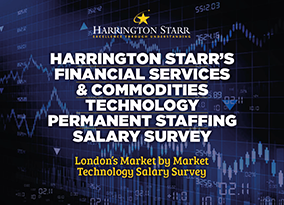TradingTech Insight Market Data & Analytics The latest content from across the platform
Getting a Grip on Benchmark Contributions
A discussion of the issues surrounding bank-contributed market information for benchmarks and indexes. Recent scandals involving bank-contributed financial information – most notably 2010’s discovery of fraudulent contributions to the widely used the London Inter-Bank Offered Rate (LIBOR) benchmark – have underscored the lack of transparency and lack of control of the rates and prices financial…
An Architecture For Intelligent Trading – Leveraging Big Data in Motion for Increased Profits
Trading firms are moving on from an obsessive focus on latency reduction to a ‘new normal’ of applying intelligence to high performance trading, to ensure that they are executing the best – most profitable and least risky – trades, and not simply the fastest ones. It’s called Intelligent Trading. The Intelligent Trading approach calls for…
Managed Market Information/Access Platforms
Faced with fundamental shifts in the dynamics of the major capital markets, trading firms are looking to maintain low latency and increase agility, while reducing complexity and cost – especially when it comes to market data and market access. To introduce the issues and options related to market data infrastructure, this industry briefing discusses: Automated…
Harrington Starr’s 2013 Financial Services Technology Sector Salary Survey
In its second year this comprehensive London salary survey covers 2,966 separate salary bands ranging from entry level to senior appointments in the financial services and commodities technology sector. The survey has been produced taking data from over 16,500 technology professionals and over 2,200 companies in the industry and gives a comprehensive benchmark of salaries…
Big Data in Trading and Risk Management
This industry briefing – sponsored by SAP – provides insight and analysis on how financial markets firms see Big Data approaches and technologies being leveraged for trading and risk applications. The briefing draws upon research conducted by A-Team Group’s BigDataForFinance.com web community, which included a survey of major financial markets firms based in the U.S. The survey…
Viewpoints on Latency – Thought Leadership at The Cutting Edge of Electronic Trading – November 2012
Viewpoints on Latency is a regular collection of news, thought leadership and opinion from the Low-Latency.com community. In this issue: * Pete Harris of Low-Latency.com provides the low-down on the latest developments at the cutting edge. * Dave Malik of Cisco Systems discusses the performance and analytics of the company’s Nexus 3548 switch. * Donal O’Sullivan of Corvil outlines new…
Mission Possible: Turning Data Deluge into Opportunities for Financial Trading
In the financial trading markets, the race to zero is on, with participants including competing marketplaces, algorithmic trading operations, high frequency trading firms, market data aggregators and execution network providers all playing their role in pushing down transaction times from hundreds of milliseconds to tens of microseconds. Linking all of these players together is data…
A Flexible Approach to Market Infrastructure
The growing speed and complexity of today’s financial markets are placing all but the most technologically well-resourced participants at a strategic disadvantage. Buy- and sell-side firms, the execution venues they use, and the wide range of post-trade, market data and other service providers whose offerings they consume, are all struggling to keep up with the…
Big Data Solutions in Capital Markets – A Reality Check
Big Data has emerged in recent months as a potential technology solution to the issue of dealing with vast amounts of data within the enterprise. As in other industries, financial services firms of all kinds are drowning in data, both in terms of the sheer volume of information they generate and / or have to…
Architectures for Extreme Low Latency
In recent years, a combination of regulatory reforms, market structure evolution and technology innovation have combined to create a new paradigm for the global financial trading markets; one in which the speed at which transactions can be executed is fundamental to the success of market participants. Put simply, for such a participant – be it…











